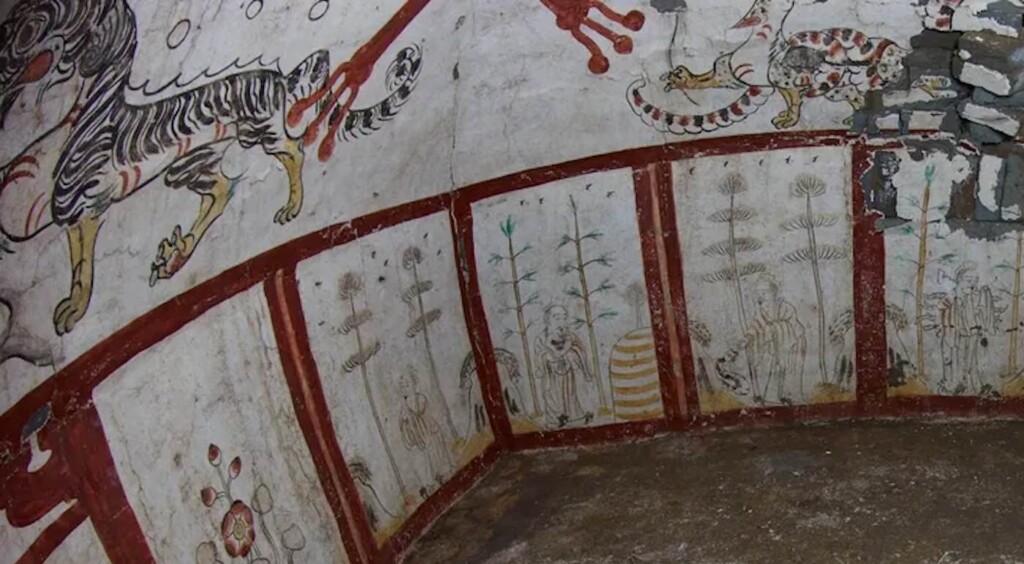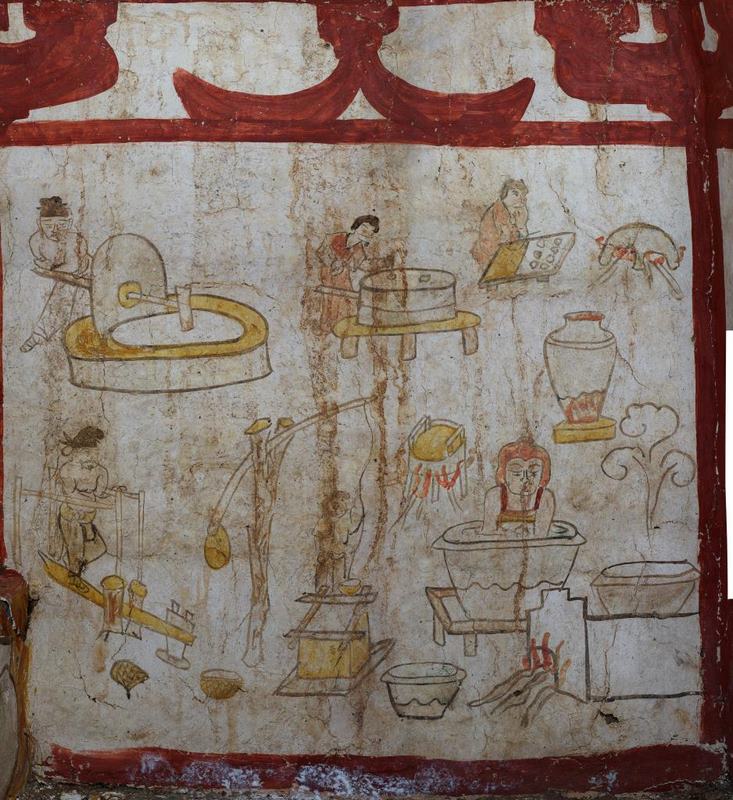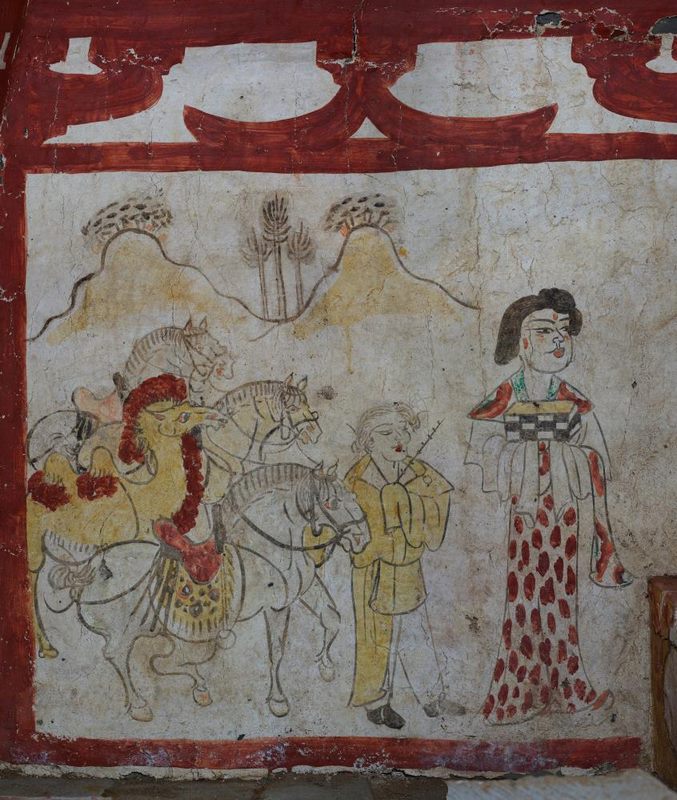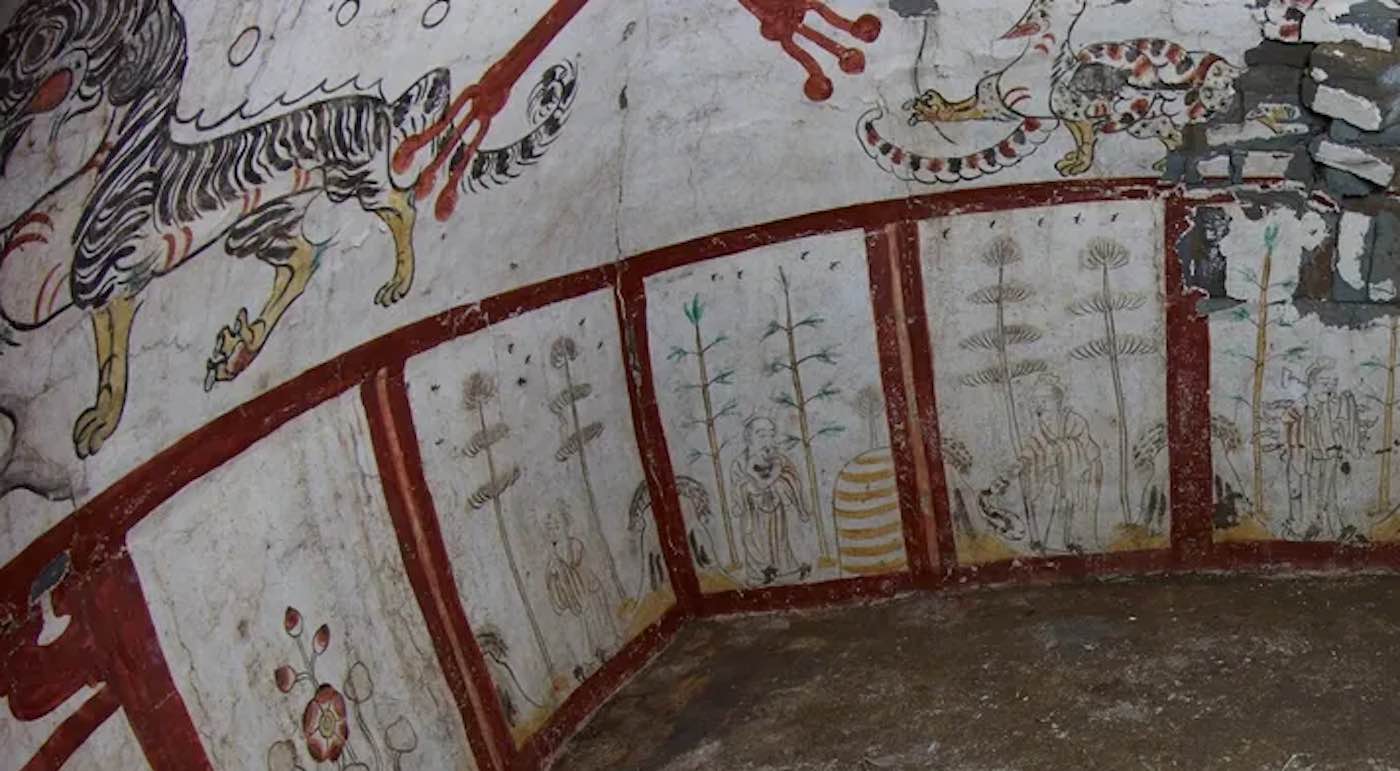
In north-central China, roadwork near the city of Taiyuan uncovered a tomb dating to the Tang Dynasty that is turning heads for its remarkably preserved collection of murals depicting daily life.
One might imagine such a tomb decorated with images of dragons among heavenly palaces resting on clouds—depicting a glorious afterlife, but this tomb shows a series of pictures of household chores, and a glimpse of the Silk Road in the form of a foreigner.
Discovered in 2018 on a hill slope alongside the old Jin Ci West Central Ring Road in Taiyuan city, the tomb consists of a brick chamber, entranceway, and corridor, and first welcomed its owners into the embrace of the Earth around 736 CE during the Tang Dynasty.
The Tang saw the Chinese Empire reach its greatest territorial extent, and become a cosmopolitan realm of magnificence, luxury, and highly developed in arts, letters, and commerce. Several of the most famous rulers of China date to this period, including the concubine turned Empress Wu Zetian, and the domineering Emperor Taizong, who created much of the control and prosperity the dynasty enjoyed.
On the tomb’s three walls and four pyramidal ceiling faces, scenes from Tang life are depicted that include men and women stepping on and scooping rice, grinding grain in a mill, making noodles, bathing, and using a strange contraption mounted in an orange tree to draw water from a well.
On another panel is the depiction of a “Westerner” which for the Tang Chinese meant someone from what is known in the West as the Tarim Basin, or perhaps even further into Transoxiana—the two regions crossed by traders on the Silk Road before reaching the ‘Jade Gate’ and the Gansu Corridor into China proper.


The Westerner is depicted with blonde hair holding the reigns of an Asian camel and several horses, and was likely a Sogdian—a trading people who flourished and declined with the rise and fall of the fortunes along the Silk Road. He’s unlikely to be a Turk, as the Tang Emperor warred fiercely with several Turkish khagans over the dynasty’s history.
NEWS FROM THE SILK ROAD: 2,000-year-old Gold Jewelry from Mysterious Central Asian Culture Discovered in Kazakhstan
Other panels show what is probably the tomb’s owners, a man in his sixties and a woman, under trees according to one of the oldest established Chinese art styles known as “figure under a tree” which dates to the Han Dynasty of the 2nd century BCE to the third century CE.
MORE CHINESE TOMBS: Extremely Elaborate 2,200-Year-old Tomb Discovered That May Have Belonged to a King–‘Most Complex Structure of its Kind’
The final set of panels shows yellow-robed swordbearers at the entrance of the tomb, alongside doormen holding the coffin in their hands and standing in positions of welcome. The ceiling is decorated with mythical beasts, likely dragons or phoenixes.
SHARE This Amazing Ancient Artwork With Your Friends Who Love History…




















